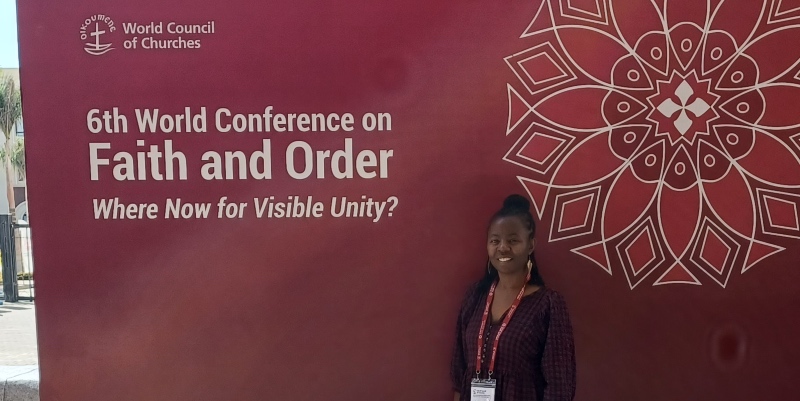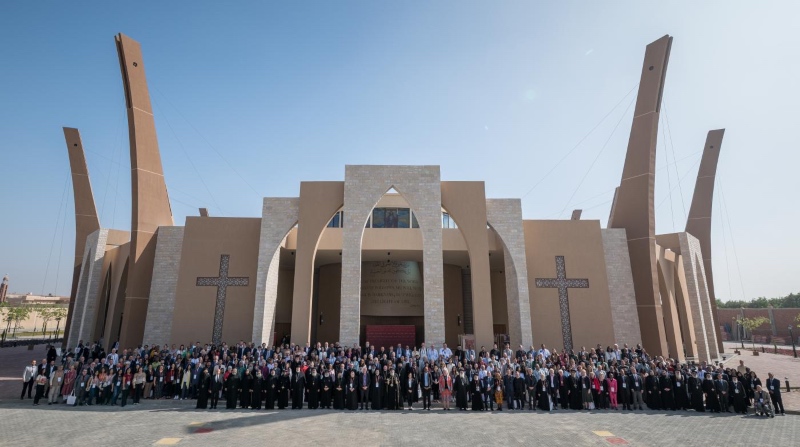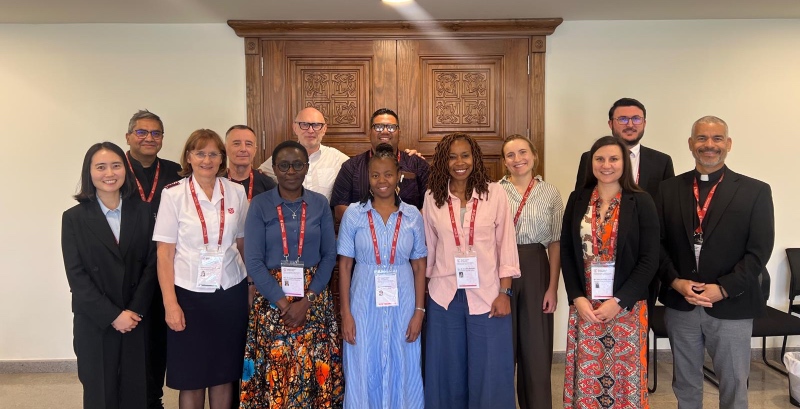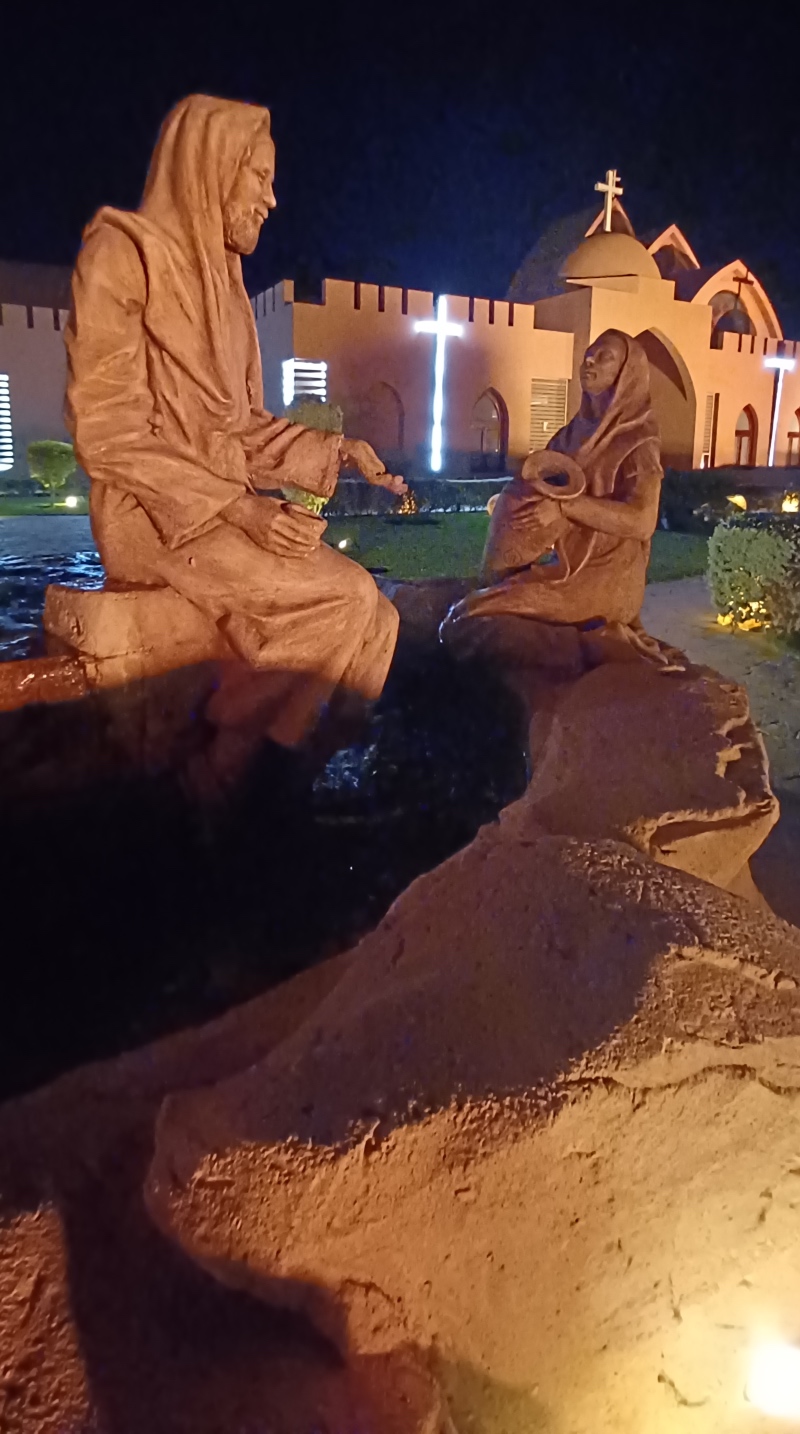Where now for visible unity?
Gale Richards reports from the recent Faith and Order World Conference of the World Council of Churches, and in so doing appeals to British Baptists to pursue a deeper ecumenical formation

Where now for visible unity?
This was the question participants gathered for the 6th Faith and Order World Conference in Egypt [1] were tasked with answering, as we also commemorated the 1700th anniversary of the Council of Nicaea. I was one of approximately 400 church leaders and theologians from a range of Church traditions gathered from across the globe, who collectively sought to answer this question.
I arrived in Egypt as the Baptist Union of Great Britain delegate, firstly, wondering – how might this question be answered by British Baptists?
Secondly, thankful that I brought with me prior ecumenical experience, through serving as Chair of Churches Together in Cambridgeshire, and as an honorary Ecumenical Canon at Ely Cathedral. This meant discernment within a diverse ecumenical context was far from alien to me. That said, I am not sure anything could have fully prepared me for the ecumenical dialogue and discernment that shaped the Conference!
The participants
The World Conference is organised by the Commission on Faith and Order of the World Council of Churches (WCC), and the previous Conference (the 5th) was held at Santiago de Compostela in 1993.
Thirty-two years on, the WCC was keenly aware that the “fellowship of churches within WCC only represents a section of World Christianity”, and so made intentional efforts to “broaden the table” for conversations at the 6th World Conference, by including participants not just from WCC member churches (e.g. Orthodox, Anglican, Methodist, Baptist, Congregationalist, Presbyterian, Lutheran, Moravian, United/Uniting Churches etc.), but also from non-member churches (e.g. Roman Catholic), and often unrepresented newer churches “Evangelical, Pentecostal, Neo-Pentecostal, Charismatic, and African Instituted/Independent Churches”. [2]
Additionally, younger and emerging ecumenical theologians partaking in the WCC’s international study programme – the Global Ecumenical Theological Institute (GETI) – were also invited to the Conference.
This rich diversity of participants was in turn reflected in the choice of facilitators and speakers across the whole Conference, that comprised corporate worship, workshops, plenary gatherings, and smaller regional and section gatherings.

People gather on the opening day of the World Council of Churches Sixth World Conference on Faith and Order in Wadi El Natrun, Egypt | Albin Hillert/WCC
Whilst this diversity at times made for the most amazing conversational opportunities, it also made our task of collectively discerning what the joint end of conference message should be, challenging.
Accordingly, I found myself constantly praying for the moderator who was charged with facilitating this discernment process. She had an incredibly difficult task. This was because whilst she would be employing a helpful consensus model for this discernment process, it still required her to get a large and diverse group to work together, and to a tight deadline. We managed to agree an end of conference message, focused on faith, mission, and unity, but for me, the greater sense of achievement was such a diverse gathering of people discerning together.
Context matters
I left the 6th World Conference with a strong sense that the answer to the Conference question “Where now for visible unity”? is that in our ecumenical walking together, we must take context more seriously. This insight emerged for me in the time I spent in the “Section meetings” of the Conference.
These meetings were grouped around three themes: “Being Church On the Way to Visible Unity”; “Being Human Discerning Humanity in the Image of God”; and “Being Church In and For the World”, and the Conference delegates were split into different groups, to focus on one of these themes.
I was assigned to one of the “Section meeting” groups focused on “Being Human Discerning Humanity in the Image of God”. There were thirteen of us in my group (pictured below), including two facilitators.

None of us (including the eminent theologian Miroslav Volf who was a member of our group) assumed or was given any superior right to speak or be heard. Our task in these “Section meetings” (we met three times over a number of days) was to reflect on the Conference keynote addresses of the particular day, in light of our “Being Human Discerning Humanity in the Image of God” focus.
One of our most animated and fruitful discussions in our “Section meetings” was about the different views we had of the Nicene-Constantinopolitan Creed of 381. This was prompted by a keynote address in a plenary session earlier in the day, that suggested the Creed should not be seen as static, but rather as dynamic.
This led to strong debate in our “Section meeting” that followed it. My contribution to the debate – from a Baptist tradition that affirms but is not bound by creeds – was to highlight that the conversation did not feel too dissimilar to debates about how texts of the Bible should be translated. As, such debates often centre around whether translations should be literal or a dynamic equivalence, and which version of the original scripts should be used for a translation.
Ultimately, our discussions led to us acknowledging that our different contexts (e.g. Church traditions and social locations) influenced what we felt was important to emphasise, in our theologising. The importance of being aware of, and acknowledging our different contexts (our being human) became even more pronounced when we moved from our “Section meetings” to the Conference “Business meetings”.
For, it was in these “Business meetings” that Conference delegates collectively sought to discern what the end of Conference message should be. It was also in these meetings, that we were urged by some who experience a more limited religious freedom in their home countries, to consider how the wording of any conference message might adversely impact them.
This was yet another example for me, of the need for Christians to grow in our abilities to acknowledge and take context more seriously, if we are to achieve a greater depth, in our walking together in visible unity.
The gift of a rare and diverse gathering
It was the gift of being at such a rare and diverse gathering of eminent church leaders and theologians, that offered those of us present fresh perspectives. I and many others were only too aware that Faith and Order World Conferences are so infrequently held, that only a few people ever have one or two opportunities in their lifetime to attend one.
 As a Baptist, I also particularly valued the deep insights into the life of the Coptic Orthodox Church who hosted the Conference delegation. Their creative use of the visual arts and outdoor space (especially at the Anafora Centre we visited, a place where biblical scenes are brought to life) to explore and nurture spirituality was simply breathtaking.
As a Baptist, I also particularly valued the deep insights into the life of the Coptic Orthodox Church who hosted the Conference delegation. Their creative use of the visual arts and outdoor space (especially at the Anafora Centre we visited, a place where biblical scenes are brought to life) to explore and nurture spirituality was simply breathtaking.
As was their attention to detail in developing their incredible Museum of Nicaea, that seeks to tell the story not just of the first ecumenical gathering at Nicaea in 325, but also what led to the gathering in the first place, and what life in the aftermath of it was like. The museum offers invaluable insights into how costly but important ecumenical walking together has always been.
A call for deeper British Baptist ecumenical formation
As I reflect on my time at the Conference, as a minister of the Baptist Union of Great Britain, I pray that British Baptists might invest more in the ecumenical formation of our church members and church leaders. I celebrate that Baptists Together is a member of WCC, but I pray more British Baptists might become aware of the work of the WCC, and the tangible progress the Faith and Order Commission (and its World Conference gatherings) has enabled over almost 100 years.
I am conscious that I was the only British Baptist delegate at the 6th World Conference, and as I reflect on the gift of being part of it, I want to appeal to British Baptists to pursue a deeper ecumenical formation.
Further, to do so, as “People of the Book”, and thus in response to the scriptural commands to love, and be one – “By this everyone will know that you are my disciples, if you have love for one another” (John 13:35); and “that they may all be one” (John 17:21).
Gale Richards, Postdoctoral Research Fellow, Centre for Baptist Studies, Regent’s Park College, Oxford
[1] At the Logos Papal Center of the Coptic Orthodox Church in Wadi El Natrun, Egypt, 24-28 October 2025.
[2] World Council of Churches (2024) Toward the Sixth World Conference on Faith and Order Commemorating the Council of Nicaea: Where Now for Visible Unity? (p. 10)
Do you have a view? Share your thoughts via our contact form
Baptist Times, 13/11/2025